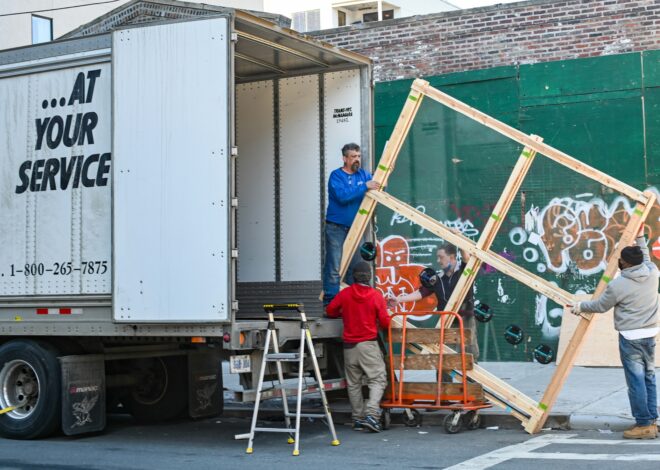
7 Tips for Moving in Summer
Summer relocations present unique challenges that can transform what should be an exciting, fresh start into a sweaty, stressful ordeal. While the season offers longer daylight hours and generally favourable weather conditions, the combination of scorching temperatures, peak moving season demand, and summer break logistics requires careful planning and smart strategies.
Whether you’re relocating for a new job opportunity or simply seeking a change of scenery, understanding how to navigate summer’s specific hurdles will make your transition smoother and more enjoyable. Here are seven essential strategies to help you conquer your warm-weather move.
1. Start Your Day Before Dawn
Beat the heat by beginning your moving activities at sunrise. Professional movers often start as early as 6 AM during the summer months, and there’s a good reason for this timing. Morning temperatures are significantly cooler, making physical labour more manageable for everyone involved.
Early starts also mean you’ll finish before the afternoon sun reaches its peak intensity. This strategy protects both your belongings and your moving team from excessive heat exposure. Electronics, wooden furniture, and delicate items particularly benefit from avoiding midday temperature extremes. The cooler morning air also reduces the risk of heat-related accidents and keeps energy levels higher throughout the day.
2. Hydration Station Strategy
Create multiple hydration stations throughout your old and new homes. Stock these areas with ice-cold water, electrolyte drinks, and cooling towels. Don’t wait until someone feels thirsty – dehydration happens quickly during physical exertion in hot weather.
Consider freezing water bottles the night before your move. These serve as both cooling devices and refreshing drinks as they gradually melt throughout the day. Remember that moving day isn’t the time to experiment with new beverages – stick with what your body knows and tolerates well.
3. Protect Your Valuables from Heat Damage
Summer heat can wreak havoc on certain belongings. Electronics should never be left in hot moving trucks for extended periods. Candles will melt, vinyl records can warp, and artwork may suffer damage from temperature fluctuations.
Pack temperature-sensitive items in your air-conditioned vehicle rather than the moving truck. This includes medications, cosmetics, cleaning supplies, and any items containing batteries. Creating a “priority transport” box for these items ensures they remain safe during the hottest part of your moving day.
4. Smart Scheduling Around Peak Demand
Summer represents peak moving season, with July being particularly busy. This increased demand affects both the availability and pricing of professional moving services. Book your preferred moving company at least eight weeks in advance to secure your desired date and potentially better rates.
Consider mid-week moves if possible, as weekends command premium pricing during summer months. Tuesday through Thursday typically offer more flexibility and competitive rates. These practical tips of moving during off-peak times can significantly impact both your experience and budget. Additionally, avoiding the end and beginning of months when lease agreements typically expire can provide even more scheduling advantages.
5. Dress Code for Success
Appropriate clothing makes an enormous difference in summer moving comfort. Choose lightweight, breathable fabrics in light colours that reflect rather than absorb heat. Avoid cotton, which retains moisture and becomes uncomfortable when wet with perspiration.
Athletic moisture-wicking materials work best for moving day activities. Don’t forget proper footwear – closed-toe shoes with good grip are essential for safety, even in hot weather. A wide-brimmed hat provides crucial sun protection during outdoor loading and unloading activities.
6. Air Conditioning Coordination
Arrange for air conditioning service at your new home before moving day. Nothing feels worse than arriving at a sweltering house after hours of physical labour in the heat. Contact utility companies well in advance to ensure power and cooling systems are operational upon your arrival.
If possible, run the air conditioning the night before your move to pre-cool your new space. This creates a comfortable environment for your moving team and helps protect temperature-sensitive belongings as they’re brought inside.
7. Create Cooling Zones
Designate specific areas in both your old and new homes as cooling zones where people can take regular breaks. These spaces should have air conditioning, comfortable seating, and easy access to refreshments.
Encourage frequent breaks – heat exhaustion can develop quickly during strenuous activity. Watch for warning signs like dizziness, nausea, or excessive fatigue in yourself and others. Sometimes, taking a 15-minute cooling break prevents hours of heat-related complications.
Make Your Summer Move a Breeze
Successfully navigating a summer relocation requires advance planning, smart timing, and prioritising everyone’s health and safety. These strategies transform potentially challenging hot-weather logistics into manageable, organised processes.
Remember that professional expertise becomes even more valuable during demanding summer conditions. Experienced moving companies understand heat-related challenges and come prepared with appropriate equipment, timing strategies, and cooling solutions.
When you’re ready to tackle your summer relocation, Butler’s Removals & Storage brings years of warm-weather moving expertise to ensure your transition stays cool, efficient, and stress-free. Professional guidance helps you save money during your move while avoiding costly heat-related damages and delays.



